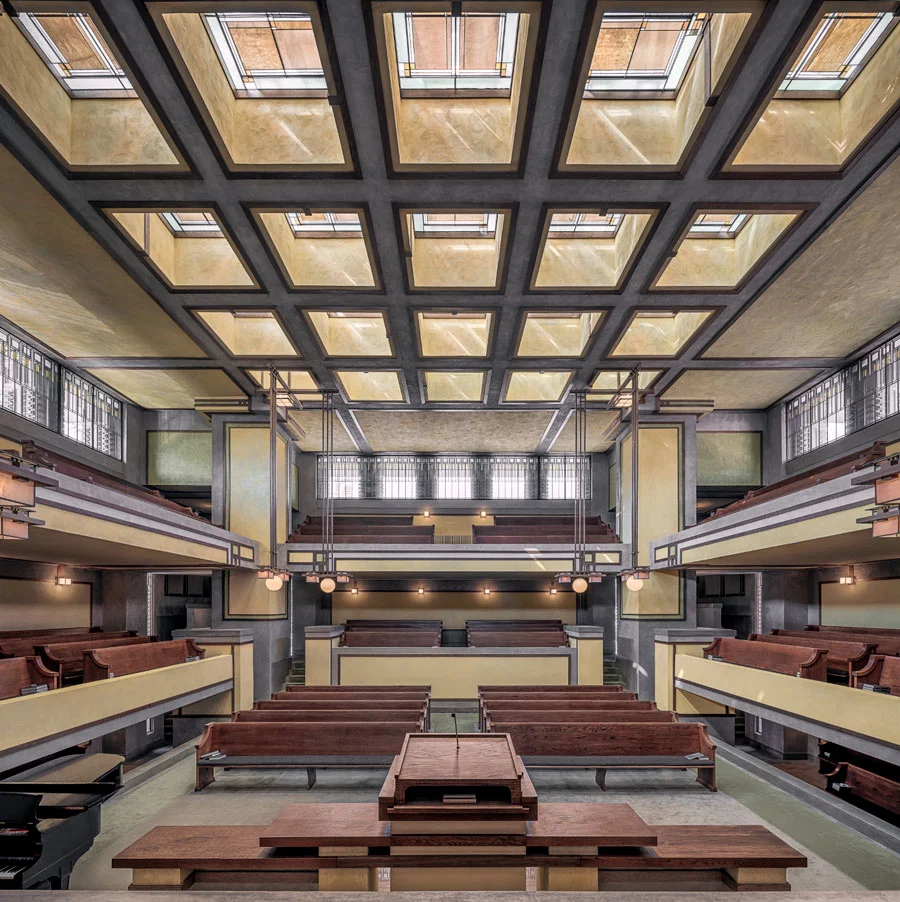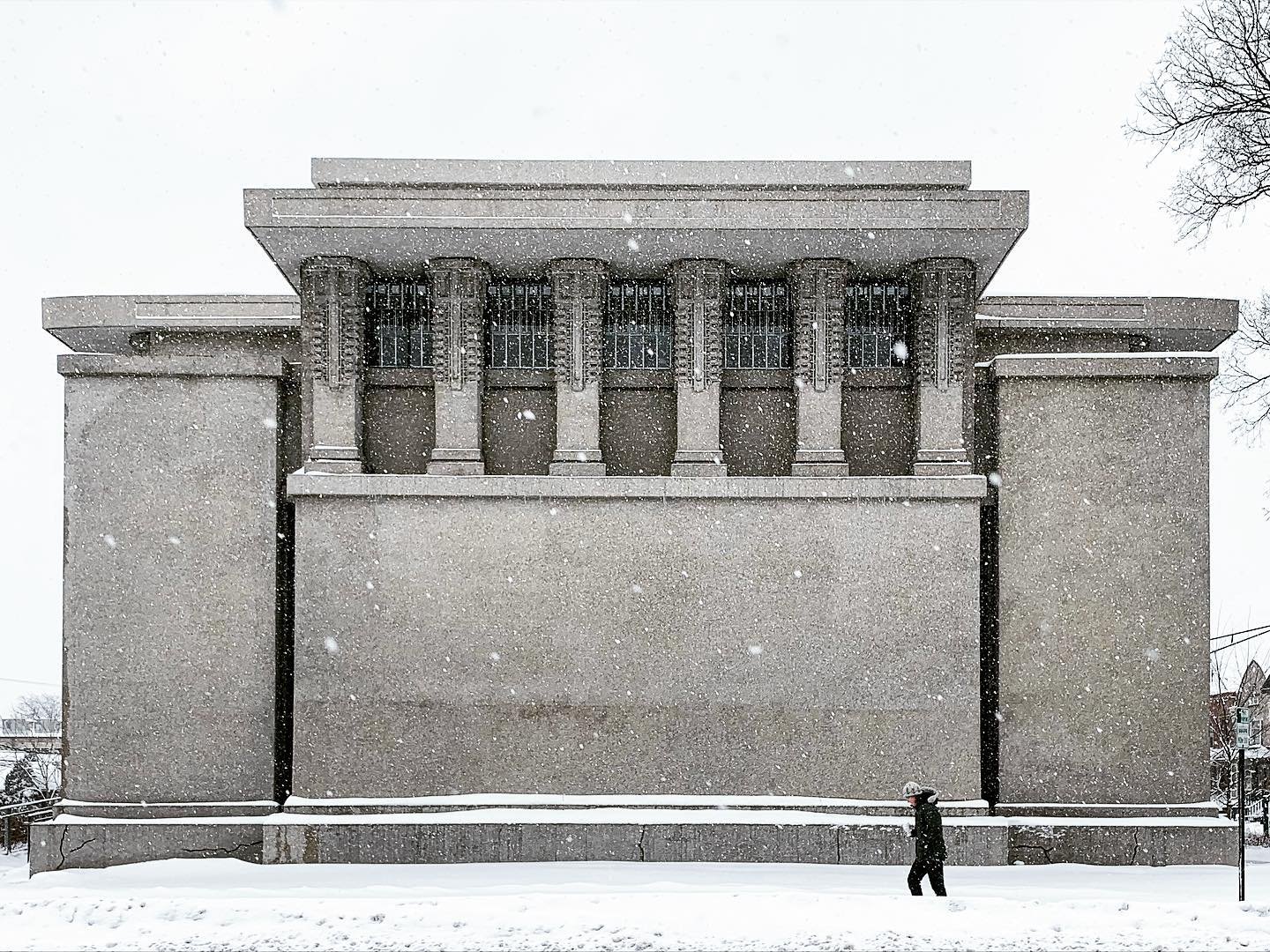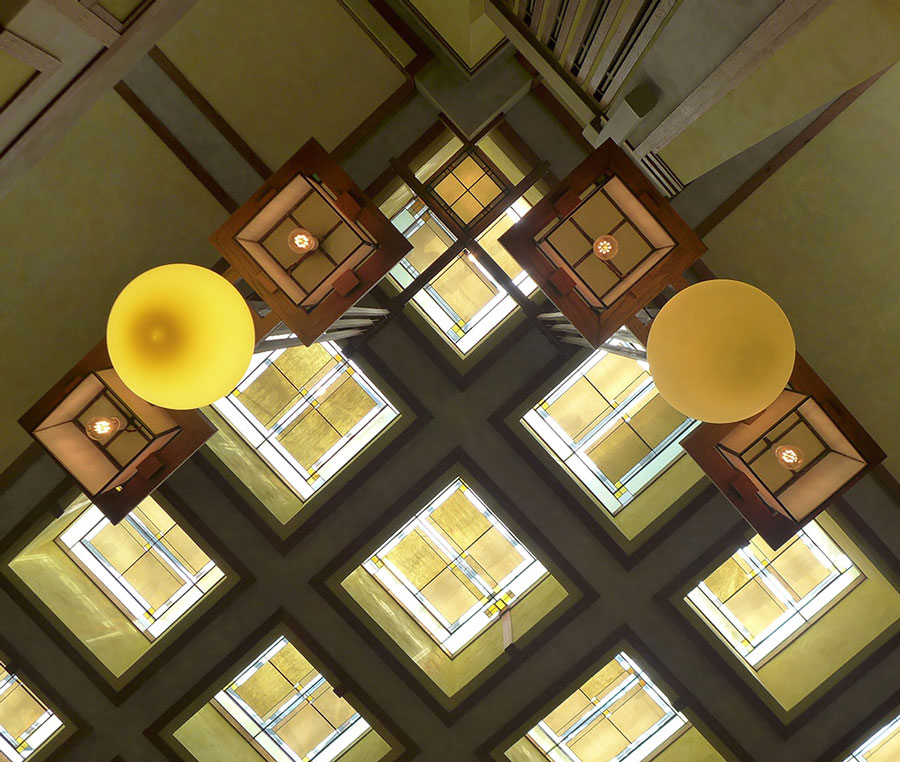Unity Temple Oak Park: 5 Reasons It’s a Must-See
Welcome to Unity Temple Oak Park, a masterpiece of modern architecture and a national historic landmark located just outside of Chicago at 875 Lake St. in Oak Park, IL. Designed by renowned architect Frank Lloyd Wright and completed in 1908, Unity Temple is a testament to the 20th-century architecture of Frank Lloyd Wright through his innovative use of materials, space, and light. This building is a significant landmark in architectural history, a cultural icon, and an important part of the Oak Park community.
Let's explore the history, design, and cultural significance of Unity Temple, as well as its recent restoration efforts and community outreach programs. Join us on a journey through this unique and inspiring building and discover why it remains an enduring symbol of innovation and creativity in the world of architecture.



Unity Temple has a rich and fascinating history that dates back over a century. The building was commissioned by Unity Temple Unitarian Universalist Congregation, a progressive religious organization in Oak Park, IL, after a fire destroyed their original house of worship. The vision was to create a unique and modern space for worship and community gatherings. In 1905, Unity Temple Unitarian Universalist Congregation turned to renowned architect and church member Frank Lloyd Wright to design the new temple, giving him complete creative freedom to experiment with new materials and design elements.
The massive concrete structure features an expansive flat roof. For the entrance, visitors walk through low, dark passages before ascending into the open, brightly lit sanctuary. The sanctuary is the heart and anchor of the Unitarian church building.
Unity Temple quickly gained recognition and praise from architects and designers worldwide and remains one of Wright's most celebrated historic sites. Its influence on modernist architecture is widely recognized. It is considered a crucial link between the Prairie School style that Wright helped to pioneer and the emerging modernist movement that would dominate much of the 20th century.
Here are five reasons why it was FLW's best Chicago area work:
The architecture of Unity Temple is nothing short of remarkable. In fact, it is widely considered one of the earliest examples of modern architecture. Wright defied conventional church design by using reinforced concrete, a bold choice at the time, to create a unified and harmonious space. The geometric forms, strong horizontal lines, and use of light and shadow showcase Wright’s signature Prairie School style while also emphasizing the spiritual and communal aspects of the building.
Inside, Unity Temple’s stunning sanctuary is designed to foster a sense of togetherness, eliminating traditional barriers between the congregation and clergy. Large windows allow natural light to filter through, illuminating the space. The intricate use of stained glass, custom-designed fixtures, and warm earth tones creates a peaceful atmosphere.
Wright's design for Unity Temple emphasizes the harmony between form and function. The building's layout and interior spaces are meticulously planned to create an intimate and contemplative atmosphere, enhancing the spiritual experience for visitors. It is known for integrating landscape and environment into the building's design. The temple sits on a triangular lot, which challenged Wright to create a functional and visually striking structure. To overcome this challenge, Wright designed the building as a series of interconnected spaces, with skylights and a central worship hall surrounded by smaller rooms and corridors that allowed maximum flexibility and accessibility.
The design also incorporated elements of Japanese architecture, such as low ceilings and carefully crafted light patterns, which further enhanced the building's sense of harmony with nature. The result is a modern building that is beautiful, innovative, and deeply connected to its surroundings, creating a unique and inspiring space for worship, contemplation, and community engagement.
Frank Lloyd Wright's innovative use of natural light in Unity Temple demonstrates his architectural brilliance and greatly contributes to the temple's recognition as one of his greatest works. Including strategically positioned skylights and intricately designed stained glass windows serves a functional purpose rather than mere decorative elements. These features effectively harness and distribute natural light within the interior. The skylights allow sunlight to filter into the sanctuary, creating a dynamic atmosphere as light patterns shift and play across the surfaces. This interplay of light fosters a contemplative and serene ambiance. Meanwhile, the stained glass windows, with their geometric patterns and subtle color variations, filter incoming light and add depth and texture to the interior space.
Wright's thoughtful use of light and spatial design in Unity Temple elevates the building's significance beyond its practical purposes, infusing it with a sense of spiritual awe. This harmonious integration of the spiritual and aesthetic aspects highlights Wright's architectural expertise and deep understanding of how the built environment can influence emotional and spiritual experiences. Unity Temple remains a testament to Wright's enduring legacy as a visionary architect and a significant landmark in architectural history.
Unity Temple, nestled in the heart of Oak Park, Illinois, holds profound cultural significance as a pivotal work in the history of American architecture. This Wright site was an architectural masterpiece that marked a transformative shift in design principles. Its innovative use of reinforced concrete, geometric precision, and the integration of natural light set new standards that reverberated through subsequent generations of architects and designers. This transformative influence is so profound that Unity Temple has garnered recognition on UNESCO's World Heritage List, cementing its status as a globally significant architectural achievement.
Its preservation and ongoing cultural relevance are championed by such organizations as the National Trust for Historic Preservation and the Frank Lloyd Wright Foundation. After recent restoration efforts, the famous Wright building was awarded the Richard H. Driehaus Foundation National Preservation Award from the National Trust for Historic Preservation. Unity Temple continues to inspire and educate as both a living testament to Wright's genius and a dynamic cultural hub, ensuring its legacy as a UNESCO World Heritage Site remains cherished and enduring.
Beyond its architectural significance, Unity Temple serves as a dynamic cultural and community center. It is an essential cultural landmark in the Oak Park community . The house of worship has been the center for community engagement and cultural events for over a century and has played a crucial role in the social and cultural fabric of the community. It is a source of inspiration and pride for residents, who see the temple as an enduring symbol of Oak Park's history and identity.
Unity Temple's versatile spaces have been thoughtfully designed to accommodate various activities, from concerts and lectures to community events. By opening its doors to such diverse gatherings, the temple fulfills Frank Lloyd Wright's vision of a unified space catering to spiritual and secular needs. Its role as a gathering place fosters a sense of unity and engagement among residents and visitors alike, making it not just a place of worship but a vibrant cornerstone of the community. Unity Temple embodies the timeless idea that architecture can transcend its physical form and actively contribute to the cultural tapestry of society.
As a national historic landmark, Unity Temple plays an exceptionally significant role in American history and culture. Being on the National Register of Historic Places, the iconic structure will be protected and preserved for future generations, ensuring that it will continue to inspire and educate people for years to come.
Over the years, Unity Temple has undergone comprehensive restoration efforts to ensure its long-term preservation. The most recent restoration began in 2015 and was completed in 2017, focusing on repairing the building's concrete structure and restoring its unique design elements. The restoration effort was a collaboration between Unity Temple Restoration Foundation, the Frank Lloyd Wright Trust, and other partners. It was carried out with meticulous attention to detail and deep respect for the building's history and significance.
Preserving Unity Temple has been challenging, however. One of the biggest challenges has been maintaining the building's distinctive design while ensuring it meets modern safety and accessibility standards. For example, the building's low ceilings and narrow corridors can pose a challenge for visitors with mobility issues, while its unconventional layout can be difficult to navigate. The restoration team worked closely with experts in architecture, engineering, and accessibility to ensure that the modern building was restored to its original beauty and functionality while also making it safe and accessible for all visitors.
It is crucial to preserve Unity Temple for future generations. The building symbolizes Oak Park's history, identity, and community spirit. The comprehensive restoration of this internationally renowned house of worship allows for continued use for spiritual worship, improved experience for architectural tourists, and enhanced functionality for community programming.
By preserving the temple, we can ensure that future generations will be able to experience its unique beauty and learn from its innovative design, inspiring them to continue pushing the boundaries of architectural creativity and innovation.
Unity Temple is located in Oak Park, Illinois, about 10 miles west of Chicago.
Address: 875 Lake St, Oak Park, IL 60301
Phone: 708-848-6225
The temple is open:
Monday - Thursday: 10:00 a.m. - 5:00 p.m.
Friday: 10:00 a.m. - 4:00 p.m.
Self-guided audio tours of Unity Temple are $35 and include a guided tour of the Frank Lloyd Wright Home and Studio.
Enhanced tours of Unity Temple are $40 (Saturdays only).
To make the most of your visit to Unity Temple, plan ahead.
Step 1: Choose your date and time. Be sure to check the website for up-to-date hours of operation.
Step 2: Book your tour, if you're interested. Tickets can be reserved ahead of time on the website.
Step 3: Arrive early. Take time to explore the beauty of the temple.
Click here to book a tour.
Click here to visit the official Unity Temple Website.
Unity Temple is an architectural masterpiece and an important cultural and historical landmark that holds a special place in the hearts of Oak Park residents and architecture enthusiasts worldwide. From its creative use of materials and design elements to its cultural significance and impact on modernist architecture, Unity Temple remains a symbol of innovation, creativity, and community engagement.
As we look to the future, we must continue to support the restoration and preservation of this iconic building, ensuring that it remains an enduring source of inspiration and education for future generations. Whether through volunteering, donating, or simply spreading the word about this significant cultural landmark, we can all play a role in ensuring that Unity Temple continues to thrive for years. By doing so, we can celebrate the rich history and culture of Oak Park and honor the legacy of architect Frank Lloyd Wright and the many visionaries who have helped to shape our world through their groundbreaking work in design, architecture, and community building.